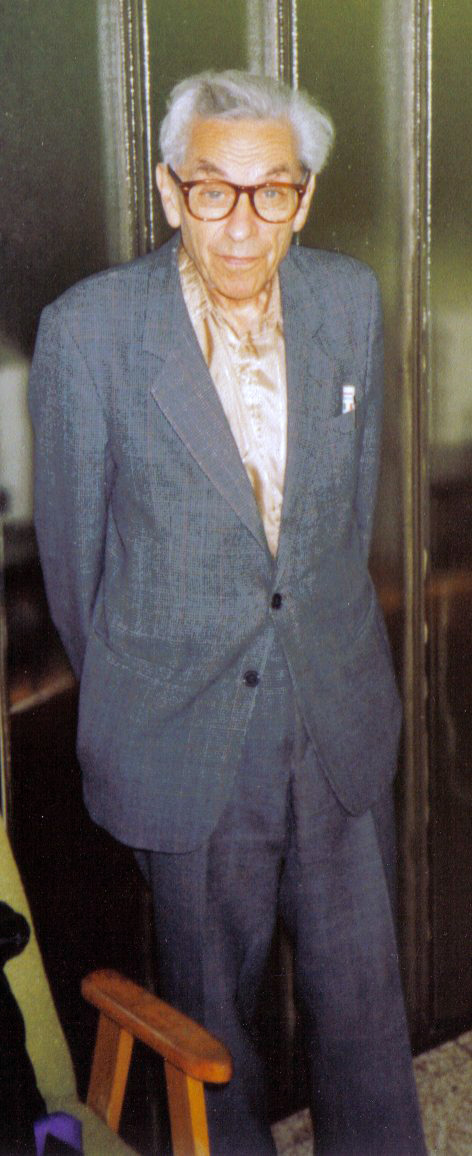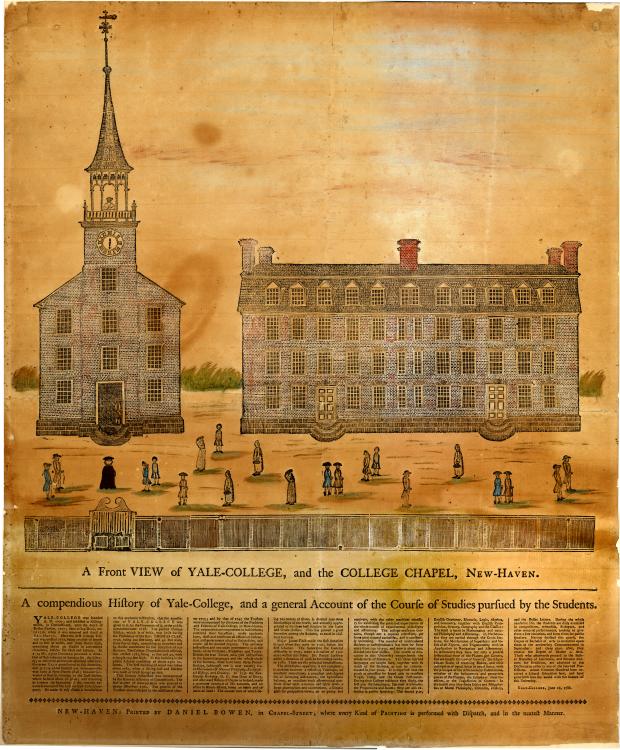|
Bruce Lee Rothschild
Bruce Lee Rothschild (born August 26, 1941) is an American mathematician and educator, specializing in combinatorial mathematics. He is a professor emeritus of mathematics at the University of California, Los Angeles. Early life and education Rothschild was born in 1941 in Los Angeles, California. He earned a Ph.D. from Yale University in 1967 under the supervision of Øystein Ore. Career Rothschild, together with Ronald Graham, formulated one of the most monumental results in Ramsey theory, the Graham–Rothschild theorem. He has collaborated with American mathematicians Joel Spencer and Ronald Graham on key texts related to Ramsey theory. Rothschild wrote several papers with Paul Erdős, giving him an Erdős number of 1. Awards and honors In 1971, Rothschild shared the Pólya Prize (SIAM) with four other mathematicians for his work on Ramsey theory. In 2012, he became a fellow of the American Mathematical Society The American Mathematical Society (AMS) is an association o ... [...More Info...] [...Related Items...] OR: [Wikipedia] [Google] [Baidu] |
Combinatorial Mathematics
Combinatorics is an area of mathematics primarily concerned with counting, both as a means and as an end to obtaining results, and certain properties of finite structures. It is closely related to many other areas of mathematics and has many applications ranging from logic to statistical physics and from evolutionary biology to computer science. Combinatorics is well known for the breadth of the problems it tackles. Combinatorial problems arise in many areas of pure mathematics, notably in algebra, probability theory, topology, and geometry, as well as in its many application areas. Many combinatorial questions have historically been considered in isolation, giving an ''ad hoc'' solution to a problem arising in some mathematical context. In the later twentieth century, however, powerful and general theoretical methods were developed, making combinatorics into an independent branch of mathematics in its own right. One of the oldest and most accessible parts of combinatorics is g ... [...More Info...] [...Related Items...] OR: [Wikipedia] [Google] [Baidu] |
Erdős Number
The Erdős number () describes the "collaborative distance" between mathematician Paul Erdős and another person, as measured by authorship of mathematical papers. The same principle has been applied in other fields where a particular individual has collaborated with a large and broad number of peers. Overview Paul Erdős (1913–1996) was an influential Hungarian mathematician who, in the latter part of his life, spent a great deal of time writing papers with a large number of colleagues — more than 500 — working on solutions to outstanding mathematical problems. He published more papers during his lifetime (at least 1,525) than any other mathematician in history. (Leonhard Euler published more total pages of mathematics but fewer separate papers: about 800.) Erdős spent most of his career with no permanent home or job. He traveled with everything he owned in two suitcases, and would visit mathematicians with whom he wanted to collaborate, often unexpectedly, a ... [...More Info...] [...Related Items...] OR: [Wikipedia] [Google] [Baidu] |
Living People
Purpose: Because living persons may suffer personal harm from inappropriate information, we should watch their articles carefully. By adding an article to this category, it marks them with a notice about sources whenever someone tries to edit them, to remind them of WP:BLP (biographies of living persons) policy that these articles must maintain a neutral point of view, maintain factual accuracy, and be properly sourced. Recent changes to these articles are listed on Special:RecentChangesLinked/Living people. Organization: This category should not be sub-categorized. Entries are generally sorted by family name In many societies, a surname, family name, or last name is the mostly hereditary portion of one's personal name that indicates one's family. It is typically combined with a given name to form the full name of a person, although several give .... Maintenance: Individuals of advanced age (over 90), for whom there has been no new documentation in the last ten ... [...More Info...] [...Related Items...] OR: [Wikipedia] [Google] [Baidu] |
Yale University Alumni
Yale University is a private Ivy League research university in New Haven, Connecticut, United States. Founded in 1701, Yale is the third-oldest institution of higher education in the United States, and one of the nine colonial colleges chartered before the American Revolution. Yale was established as the Collegiate School in 1701 by Congregationalist clergy of the Connecticut Colony. Originally restricted to instructing ministers in theology and sacred languages, the school's curriculum expanded, incorporating humanities and sciences by the time of the American Revolution. In the 19th century, the college expanded into graduate and professional instruction, awarding the first PhD in the United States in 1861 and organizing as a university in 1887. Yale's faculty and student populations grew rapidly after 1890 due to the expansion of the physical campus and its scientific research programs. Yale is organized into fifteen constituent schools, including the original und ... [...More Info...] [...Related Items...] OR: [Wikipedia] [Google] [Baidu] |
University Of California, Los Angeles Faculty
A university () is an institution of tertiary education and research which awards academic degrees in several academic disciplines. ''University'' is derived from the Latin phrase , which roughly means "community of teachers and scholars". Universities typically offer both undergraduate and postgraduate programs. The first universities in Europe were established by Catholic monks. The University of Bologna (), Italy, which was founded in 1088, is the first university in the sense of: *being a high degree-awarding institute. *using the word (which was coined at its foundation). *having independence from the ecclesiastic schools and issuing secular as well as non-secular degrees (with teaching conducted by both clergy and non-clergy): grammar, rhetoric, logic, theology, canon law and notarial law.Hunt Janin: "The university in medieval life, 1179–1499", McFarland, 2008, , p. 55f.de Ridder-Symoens, Hilde''A History of the University in Europe: Volume 1, Universities in ... [...More Info...] [...Related Items...] OR: [Wikipedia] [Google] [Baidu] |
21st-century American Mathematicians
File:1st century collage.png, From top left, clockwise: Jesus is crucified by Roman authorities in Judaea (17th century painting). Four different men ( Galba, Otho, Vitellius, and Vespasian) claim the title of Emperor within the span of a year; The Great Fire of Rome (18th-century painting) sees the destruction of two-thirds of the city, precipitating the empire's first persecution against Christians, who are blamed for the disaster; The Roman Colosseum is built and holds its inaugural games; Roman forces besiege Jerusalem during the First Jewish–Roman War (19th-century painting); The Trưng sisters lead a rebellion against the Chinese Han dynasty (anachronistic depiction); Boudica, queen of the British Iceni leads a rebellion against Rome (19th-century statue); Knife-shaped coin of the Xin dynasty., 335px rect 30 30 737 1077 Crucifixion of Jesus rect 767 30 1815 1077 Year of the Four Emperors rect 1846 30 3223 1077 Great Fire of Rome rect 30 1108 1106 2155 Boudic ... [...More Info...] [...Related Items...] OR: [Wikipedia] [Google] [Baidu] |
American Mathematical Society
The American Mathematical Society (AMS) is an association of professional mathematicians dedicated to the interests of mathematical research and scholarship, and serves the national and international community through its publications, meetings, advocacy and other programs. The society is one of the four parts of the Joint Policy Board for Mathematics and a member of the Conference Board of the Mathematical Sciences. History The AMS was founded in 1888 as the New York Mathematical Society, the brainchild of Thomas Fiske, who was impressed by the London Mathematical Society on a visit to England. John Howard Van Amringe became the first president while Fiske became secretary. The society soon decided to publish a journal, but ran into some resistance over concerns about competing with the '' American Journal of Mathematics''. The result was the ''Bulletin of the American Mathematical Society'', with Fiske as editor-in-chief. The de facto journal, as intended, was influentia ... [...More Info...] [...Related Items...] OR: [Wikipedia] [Google] [Baidu] |
Pólya Prize (SIAM) , awarded by the Mathematical Association of America
{{Disambig ...
Pólya Prize may refer to: * George Pólya Prize, awarded by the Society for Industrial and Applied Mathematics (SIAM) *Pólya Prize (LMS), awarded by the London Mathematical Society See also * George Pólya Award The George Pólya Award is presented annually by the Mathematical Association of America (MAA) for articles of expository excellence that have been published in The College Mathematics Journal. The award was established in 1976, and up to two aw ... [...More Info...] [...Related Items...] OR: [Wikipedia] [Google] [Baidu] |
Paul Erdős
Paul Erdős ( ; 26March 191320September 1996) was a Hungarian mathematician. He was one of the most prolific mathematicians and producers of mathematical conjectures of the 20th century. pursued and proposed problems in discrete mathematics, graph theory, number theory, mathematical analysis, approximation theory, set theory, and probability theory. Much of his work centered on discrete mathematics, cracking many previously unsolved problems in the field. He championed and contributed to Ramsey theory, which studies the conditions in which order necessarily appears. Overall, his work leaned towards solving previously open problems, rather than developing or exploring new areas of mathematics. Erdős published around 1,500 mathematical papers during his lifetime, a figure that remains unsurpassed. He was known both for his social practice of mathematics, working with more than 500 collaborators, and for his eccentric lifestyle; ''Time'' magazine called him "The Oddball's Oddba ... [...More Info...] [...Related Items...] OR: [Wikipedia] [Google] [Baidu] |
University Of California, Los Angeles
The University of California, Los Angeles (UCLA) is a public university, public Land-grant university, land-grant research university in Los Angeles, California, United States. Its academic roots were established in 1881 as a normal school then known as the southern branch of the California State Normal School which later evolved into San Jose State University, San José State University. The branch was transferred to the University of California to become the Southern Branch of the University of California in 1919, making it the second-oldest of the ten-campus University of California system after the University of California, Berkeley. UCLA offers 337 undergraduate and graduate degree programs in a range of disciplines, enrolling about 31,600 undergraduate and 14,300 graduate and professional students annually. It received 174,914 undergraduate applications for Fall 2022, including transfers, the most of any Higher education in the United States, university in the United Stat ... [...More Info...] [...Related Items...] OR: [Wikipedia] [Google] [Baidu] |




